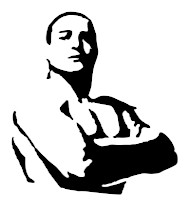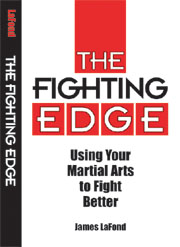Thorwald Shield-Hewer is a superior villain, an alpha male combatant with the cunning to outwit the protagonist. He is cruel enough to earn the hatred of the reader but not so cruel as to be sadistic, which is to be weak within. Thorwald is not overwritten but rather a worthy foe.
The Night of the Wolf, unsold in his lifetime, is an obvious precursor to Beyond the Black River, The Black Stranger and Swords of the Read Brotherhood [a rewrite of the latter], most of which did not sell, though they are among Howard’s best works. In this tale Howard places a Viking versus Indian drama, which surely played out on the East Coast of North America, in the Shetland Islands, peopled by the Picts, which though a historical people of Northern Britain, are handled by Howard as half Neanderthal/half Iroquois survivors from the dawn of mankind. He even clothes the Shetlands in a massive forest and sets scenes as if he were James Fenimore Cooper writing a leather stocking novel:
“Beyond the stockade the tall dark forest loomed menacingly.”
Politically, the setting is very much like English North America and almost identical to the situation at Navidad, the settlement Columbus left behind on Hispaniola, where colonizers who represented themselves as wanting only a safe harbor and a berth on the native coast began abducting native women.
As Cormac Mac Art, blood descendent of Kull, in the guise of another Irish renegade visits the Norwegian Vikings in their skali, Brulla, the blood descendent of Kull’s comrade Brull, conducts an embassy. Brulla’s speech is worth recounting as a demonstration of Howard’s repeated theme that the same Nordic races that persecuted the Gaels and Celts in the British eyes did the same to the Iroquois and Algonkian in their homeland in a later age and conflates the two sylvad dramas here, as he did in Beyond the Black River and The Black Stranger:
“…you came to Golara, desiring only peace with my people. You would be our friend and protect us from the raids of others of your accursed race. We were fools; we dreamed there was faith in a sea-thief. We listened. We brought you game and fish and cut timbers… But as soon as your stockade was built, more of you came... Soon you became arrogant and overbearing. You insulted our chiefs, beat our young men—of late your devils have been carrying off our women and murdering our children and our warriors.”
Howard essentially sketched, through the voice of Brulla, the situation that afflicted the Wompanoag tribe of New England. But in this most racially charged tale of his, Howard lets the reader experience what New England in 1676 might have been like if all of the Indian tribes were united against the invader instead of most tribes allying with the alien race. In the person of Brulla we have a Metacomet leading a racial confederacy against the alien invader rather than a chief caught between the invader and enemies of his own race. In that’s sense this story is truly fantasy. Brulla and the Picts represent the ethnic spirit rooted in a homeland verses the materialistic slave-master mentality of the eager guest turned invader.
A truly wolfish portrait of Cormac Mac Art is sketched, largely in adversarial dialogue as he is discovered and captured by his Viking enemy who, for all of his cruelty is exposed as a practical antagonist and a committed race loyalist:
“By Thor, you ranged through my carles like a hunger-maddened wolf through a flock of sheep! Are all of your race like you? …You are such a man as I would have for comrade…
“I did not expect you to accede to my demand, and that spells your doom, because I cannot let such a foe of my race go free.”
As cruel as Thorwald is he is honorable to his enemy, honest in his words and loyal to his race. The latter is seen as an evil and not a good in our cosmopolitan age. The Vikings and the Picts in this story both reflect a virtue which Cormac lacks, unconditional race loyalty. In his three stories, Cormac is the modern man in his most ruthless guise, an outcast with no nation, making his way by his wits in a world dedicated to his destruction and peopled with fiercely ethnic allies and enemies which seethe tribe-upon-tribe in a world likewise dedicated to their extinction.
Cormac speaks on this point when, after being freed from the Norse by Brulla he frees an allied Dane and hands him a sword:
“But for whom will you strike—the Norse who have kept you cooped like a caged wolf and would have slain you—or the Picts who will cut your throat for the color of your hair?”
What follows is a supremely nasty Dark Age battle waged between tribes and bands of three races—with the lone Gaelic wolf savagely among them—all standing at the edge of extinction, suffering no false illusions of a brotherhood of man.
In summation, Cormac Mac Art seems to represents the authors modern will projected back into a time-darkened age, which is the opposite trajectory of most of Howard’s heroic channeling, in which the ancient consciousness wells up within the modern mind.
A Well of Heroes
link › jameslafond.blogspot.com
Reverent Chandler: The Saga of Fend
link › jameslafond.blogspot.com











Gold.